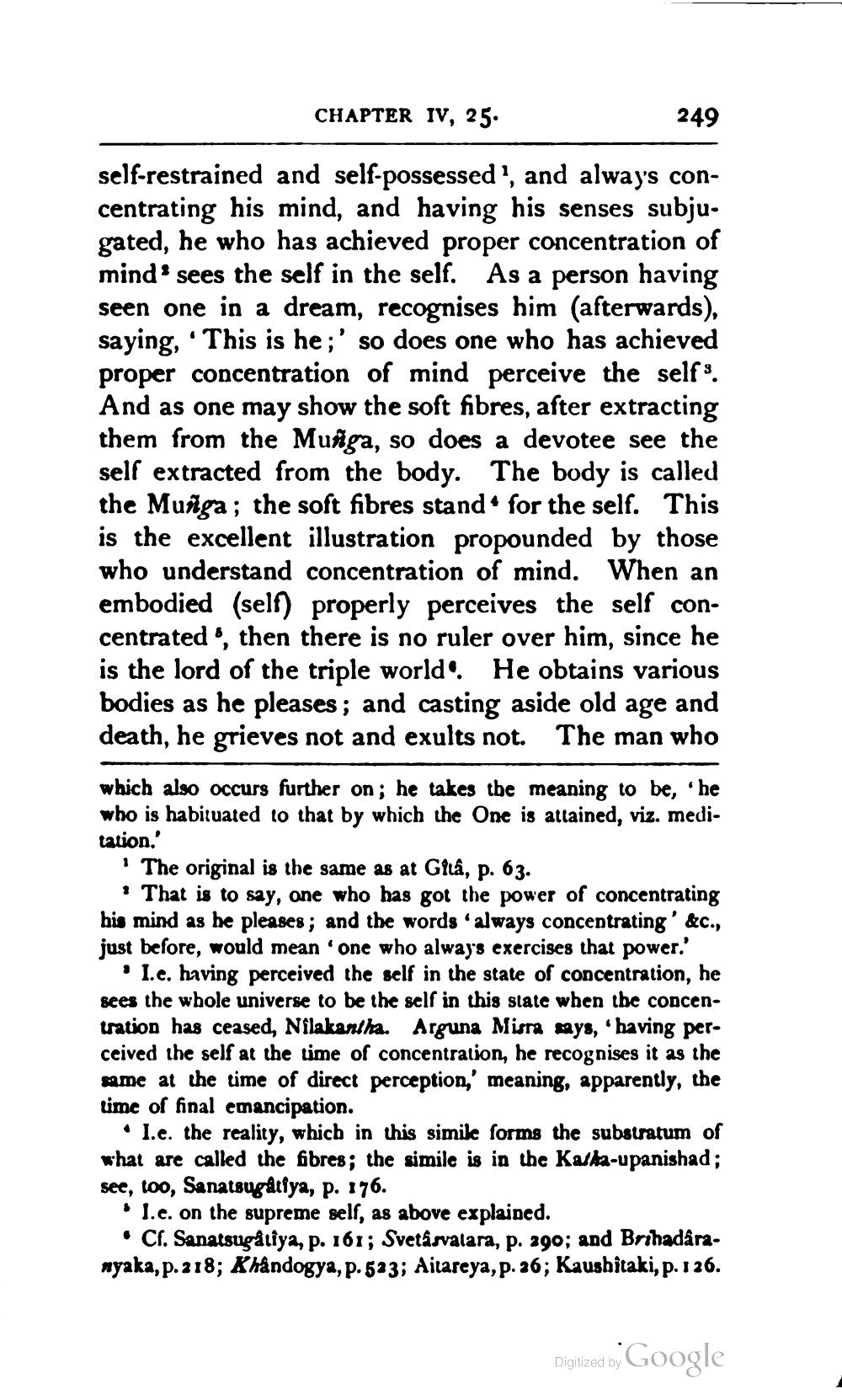________________
CHAPTER IV, 25.
249
self-restrained and self-possessed', and alway's concentrating his mind, and having his senses subjugated, he who has achieved proper concentration of mind sees the self in the self. As a person having seen one in a dream, recognises him (afterwards), saying, “This is he;' so does one who has achieved proper concentration of mind perceive the selfs. And as one may show the soft fibres, after extracting them from the Munga, so does a devotee see the self extracted from the body. The body is called the Muñga; the soft fibres stand for the self. This is the excellent illustration propounded by those who understand concentration of mind. When an embodied (self) properly perceives the self concentrated “, then there is no ruler over him, since he is the lord of the triple world'. He obtains various bodies as he pleases; and casting aside old age and death, he grieves not and exults not. The man who
which also occurs further on; he takes the meaning to be, 'he who is habituated to that by which the One is attained, viz. meditation.'
" The original is the same as at Glla, p. 63.
· That is to say, one who has got the power of concentrating his mind as be pleases; and the words “always concentrating' &c., just before, would mean one who always exercises that power.'
• I.e. having perceived the self in the state of concentration, he sees the whole universe to be the sell in this state when the concenuration has ceased, Nilakantha. Arguna Misra mys, 'having pero ceived the self at the time of concentration, he recognises it as the name at the time of direct perception, meaning, apparently, the time of final emancipation.
• I.e. the reality, which in this simile forms the substratum of what are called the fibres; the simile is in the Kaka-upanishad; see, too, Sanatsu galiya, p. 176.
l.c. on the supreme self, as above explained. • Cl. Sanatsugaliya, p. 161; Svetäsvalara, p. 290; and Brihadaranyaka, p. 218; Khåndogya, p. 523; Aitareya, p. 36; Kaushitaki, p. 126.
Digitized by Google




